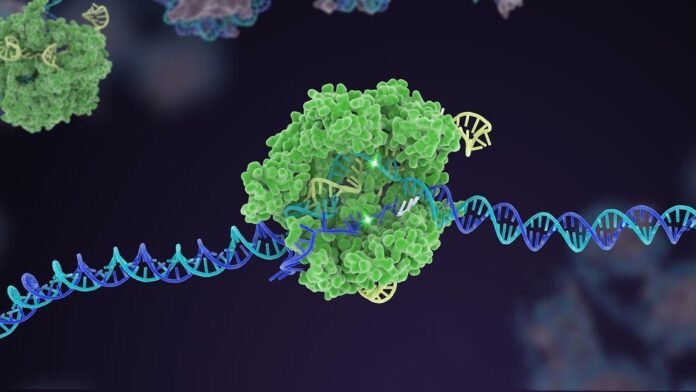As biotechnology continues to evolve, so do the technologies that support it. CRISPR (Clustered Regularly Interspaced Short Palindromic Repeats) is one such technology that has revolutionized the field of biotechnology, medicine, and agriculture. By allowing scientists to edit genes with unprecedented precision and speed, CRISPR is opening up new possibilities for treating genetic diseases, developing new crops, and even creating new life forms.
What is CRISPR?
CRISPR is a technology that allows scientists to edit genes by using a molecule called Cas9 to cut and modify DNA sequences. The CRISPR system is derived from a natural defense mechanism used by bacteria to protect themselves against viral infections. But what makes CRISPR so special?
Perplexing Precision and Burstiness of CRISPR Technology
CRISPR technology is relatively new, and it has only been in use since 2012. However, it has already been used to make significant advancements in biotechnology, medicine, and agriculture. This is because CRISPR has the ability to produce perplexing precision and burstiness in gene editing.
Precision, in the sense that CRISPR allows for targeted gene editing, and burstiness, in the sense that CRISPR enables the editing of genes at an unprecedented speed. This means that scientists are able to make precise modifications to genes quickly and efficiently, making it possible to achieve results that were previously impossible.
Applications of CRISPR in Biotechnology
CRISPR technology has the potential to revolutionize biotechnology by allowing scientists to edit genes with unprecedented precision and speed. Here are some of the key applications of CRISPR in biotechnology:
-
Disease Treatment
CRISPR technology is being used to develop new treatments for genetic diseases, such as cystic fibrosis and sickle cell anemia. By editing the genes responsible for these diseases, scientists are able to correct the underlying genetic mutations and potentially cure the disease.
-
Drug Development
CRISPR technology is also being used to develop new drugs, particularly for cancer and other diseases with complex genetic components. By using CRISPR to edit genes, scientists are able to identify new drug targets and develop more effective treatments.
-
Agricultural Innovation
CRISPR technology is also being used to develop new crops with desirable traits, such as drought resistance and increased yield. By editing the genes responsible for these traits, scientists are able to create crops that are more resilient and productive, which could have a major impact on global food security.
-
Biofuels
CRISPR technology is also being used to develop new biofuels, by editing the genes responsible for the production of biofuels in plants and algae. This could have a major impact on reducing our reliance on fossil fuels and reducing greenhouse gas emissions.
Challenges of CRISPR in Biotechnology
Despite the potential of CRISPR technology in biotechnology, there are also significant challenges to consider. These include ethical and regulatory concerns, as well as the potential for unintended consequences of gene editing.
Ethical and Regulatory Concerns
The use of CRISPR technology in biotechnology raises significant ethical and regulatory concerns. For instance, there is a concern that gene editing could be used to create so-called “designer babies” with desirable traits, which could lead to social inequality and discrimination. Additionally, there are concerns around the safety and efficacy of gene editing, particularly when it comes to editing genes in human embryos.
Unintended Consequences
Another challenge of CRISPR technology in biotechnology is the potential for unintended consequences of gene editing. For example, gene editing could lead to unexpected changes in other genes or even to the creation of new diseases. Furthermore, there is a concern that gene editing could lead to unintended changes in the environment, particularly when it comes to the use of gene-edited crops.
The Future of CRISPR in Biotechnology
Despite the challenges of CRISPR technology in biotechnology, the future of gene editing looks promising. As scientists continue to refine the technology and explore its potential applications, we can expect to see even more breakthroughs in the years to come.
Potential Future Applications of CRISPR in Biotechnology
Some potential future applications of CRISPR in biotechnology include:
- Creating new life forms with desirable traits, such as increased resilience to climate change or increased productivity.
- Developing new treatments for genetic diseases, including rare diseases that currently have no cure.
- Creating gene-edited crops that are more productive, resilient, and sustainable.
- Developing new biofuels that are more efficient and environmentally friendly.
- Creating gene-edited animals that are resistant to disease and can be used for food production.
Conclusion
In conclusion, CRISPR technology is a powerful tool that has the potential to transform biotechnology, medicine, and agriculture. By allowing scientists to edit genes with unprecedented precision and speed, CRISPR is opening up new possibilities for treating genetic diseases, developing new crops, and even creating new life forms.
However, it is important that we approach this technology with caution and consideration for the ethical and regulatory implications of gene editing. By doing so, we can harness the power of CRISPR to create a better future for ourselves and future generations.
Google News | Telegram
















